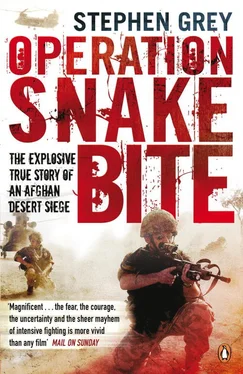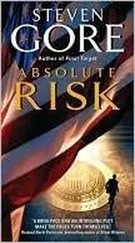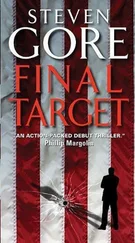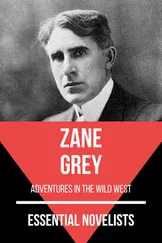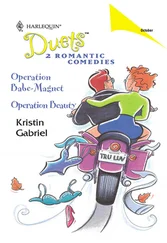When I returned to the UK, I asked General Richards whether ‘take down’ operations really served a purpose. He accepted that ‘constantly going for names and putting crosses through them means that you’re probably further alienating a lot of people, and anyway they’ll be replaced’.
But the real problem, he felt, was that the balance was ‘probably wrong’ because there simply were not enough troops around to adopt the classic tactics of counter-guerrilla warfare – namely dominating the ground and training powerful indigenous forces.
Across Afghanistan, the steady encroachment of the Taliban and a widening sense of growing corruption were prompting political demands in the United States for the kind of ‘surge’ of thousands more troops that, it was argued, had worked successfully in Iraq.
Incoming US President Obama argued that the war in Afghanistan was far more vital to America than the conflict in Iraq. As I write, he was drawing up plans to send as many as 15,000 to 30,000 extra troops to the country. Among them, military commanders suggested, could be an entire extra brigade for Helmand, with accompanying firepower far exceeding Britain’s contribution.
In an interview just before he ended his tour as NATO commander, General McNeill told me the combination of foreign forces and Afghan police and army added up to ‘little better than 100,000 men’ – barely a quarter of what US counter-insurgency doctrine said was needed to control such a large country. ‘Most people don’t realize that this place is one and half times the size of Iraq, and with a bigger population.’ Allied forces were short of both infantry troops that could be moved around the country without restrictions, in helicopters and planes, and of intelligence and surveillance systems. ‘This theatre is under-resourced, and NATO has to step up to it,’ he said.
But was it worth bringing in extra troops without a credible strategy in place?
Although a whole new generation of American soldiers and commanders spoke the language of counter-insurgency, it was proving as hard for the US army to go beyond mere sloganeering as it was for the British.
Still infected by the language of the ‘war on terror’, which labelled all those who supported the Taliban as terrorists worthy of punishment or death, too many from the old school seemed to find it impossible to understand just why so many Afghans wanted to fight both the foreigners and Karzai’s government. Just like in the Vietnam war there were still those who believed that, if only the war was prosecuted harder, if only the base camps across the border could be attacked without those annoying ‘political restrictions’, then somehow this revolt could be quelled.
One senior official spoke starkly of platoons of US soldiers in eastern Afghanistan who were ‘lost in a private war, filled with the preaching of evangelical padres who viewed Afghanistan as a kind of American jihad against Godless heathens’.
Major Guy Jones, the operations officer of 1 Fury, described a gulf in attitudes between different US units that explained why, in some parts, too many innocents got killed. In the Korgal valley in eastern Afghanistan, more Americans had been killed than anywhere else. They were hated there because the fighting had destroyed the only local source of income, timber logging. ‘It is a vendetta fight on both sides now. After you lose so many people, things change, and it takes a very strong commander at every level to resist that’. After that, it doesn’t matter what happens, it’s always going to be, ‘I’m going to kill whoever is out there.” And they could be as guilty as sin, but it doesn’t necessarily mean the best choice is to kill them.’
There were places like Korgal, said Jones, ‘all over the place’ across Afghanistan where the vendetta fight meant, for example, that if an improvised bomb struck a patrol then ‘anybody that is seen in that area is killed guilty or innocent, doesn’t matter’. A hard-to-reverse mentality took hold that put self-protection above all else, rather than pausing and verifying who was good or bad.
The lesson his battalion had learned in all their months in Afghanistan, ending with the battle of Musa Qala, was to give the Afghans they met, even hostile ones, the benefit of the doubt. ‘Some people have weapons, and some of them don’t, but unless they’re actually firing at you, nine times out of ten, they’re not all bad.’
‘The current situation is bad, the security situation is getting worse, so is corruption, and the government has lost all trust,’ said Cowper-Coles, according to a leaked version of a conversation with the deputy French ambassador in Kabul.
The British ambassador was quoted in the French diplomatic cable dispatched on 2 September as arguing that NATO troops exacerbated the conflict by propping up an unpopular regime, postponing its inevitable downfall. ‘The presence of the coalition, in particular its military presence, is part of the problem, not part of its solution… Foreign forces are the lifeline of a regime that would rapidly collapse without them. As such, they slow down and complicate a possible emergence from the crisis.’
Reacting to the leak, a Foreign Office spokesman said the words attributed to Cowper-Coles were a ‘parody’ of his views and did not represent British government policy. Others suggested they were more a reflection of the French diplomat’s own views. But – whether they were the British ambassador’s position or not – some of the quoted remarks had resonance.
Cowper-Coles allegedly told the French diplomat that the US should be dissuaded from getting ‘further bogged down in Afghanistan’. A reinforcement of troops would ‘have perverse effects: it would identify us even more strongly as an occupation force and would multiply the targets for the insurgents’. There was no option but to back the United States, but the current US strategy was ‘destined to fail’.
In an interview with the Sunday Times as he prepared to leave Helmand, Brigadier Mark Carleton-Smith said the public should expect no decisive victory against the Taliban. Two months after his optimistic talk of reaching a ‘tipping point’ in suppressing the Taliban, he now declared: ‘We’re not going to win this war. It’s about reducing it to a manageable level of insurgency that’s not a strategic threat and can be managed by the Afghan army.’ The brigadier thought that the war could be resolved only through political settlement.
‘We want to change the nature of the debate from one where disputes are settled through the barrel of the gun to one where it is done through negotiations,’ Carleton-Smith said. ‘If the Taliban were prepared to sit on the other side of the table and talk about a political settlement, then that’s precisely the sort of progress that concludes insurgencies like this. That shouldn’t make people uncomfortable.’ [25] Christina Lamb, ‘War on Taliban Cannot Be Won, Says Army Chief’, Sunday Times , 5 October 2008.
As he spoke, secret talks were beginning, some brokered by the Saudi government, which aimed to begin a dialogue with senior Taliban. Intermediaries were sent to talk to the Taliban leadership in Quetta, Pakistan, and a list of demands was received.
What frustrated many western officials, however, as it had before, was uncertainty over President Karzai’s attitude. In public, Karzai talked the talk of reconciliation and tribal solutions. But in private he was accused of undermining such efforts. A deal with the Taliban would, many realized, ultimately be Karzai’s surrender. And reaching out to the many tribes in armed revolt against his rule would mean breaking ranks with all his supporters and friends across the country who sustained the president in power – and extracted favours in return.
Читать дальше
